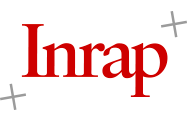
XVIII th World Economic History Congress
Colloque international
Colloque international
Boston, 29 juillet - 3 août 2018
Session organisée par HE Ping (Université du Peuple, -Remming-, Pékin) et Georges Depeyrot (CNRS-ENS)
Distinctive and Interlinked: Chinese Money and Finance under Globalization from Historic Perspectives
Compared with those of western countries,especially Europe,Chinese money and finance has been walking on a distinctive path of development, which is proven by the monetary structure change, the uniqueness of financial institutions and unique international chance as well as pattern of financial modernization. From a comparative perspective,this session will discuss the monetary structure changes in China, the turning point for financial modernization in the international context,and the features and patterns of finance structure and institution in China in the process of modernization. Thereby we will clarify the financial fountain of Chinese economic development and enrich the contents of monetary and financial theory. In ancient China, copper coin had circulated for more than 2000 years as the dominant monetary form. At the same time, copper coins, silk and silver jointly formed a multicomponent structure that showed different proportions of its components at different times. Moreover, when the Western world entered the modern age, China was one of the few countries whose key currency was still occupied by silver. This session will discuss the characteristics of ancient China’s copper-coin-centered monetary structure as well as the silver-centered monetary system in modern times. Referring to modern currency structural system in western countries, we will investigate how these characteristics impact on China’s economic development and whether the different structures of the monetary system between the western and China was one of the factors that made China falling behind the West.
During the modern period, when most western countries entered the capitalism society, the financial system and institutions in China was still dominated by western colonists, embodying quite obvious dependency. Compared to Japan, the financial modernization of China was facing the adverse international opportunities, in which the Western countries inhibited the development of China’s financial independence. There are two questions need to discuss. First, the Integration of the traditional financial organizations such as banking houses (Qian zhuang), draft banks (Piao hao) and modern financial organizations. Second, the challenge faced China modern banking system in the process of imitating and competing with the Western ones which monopolized the Chinese financial market. The situation with complex organizational structure of financial systems and suppressed international opportunity specialized Chinese financial system and its own efficiency. All of these will be discussed from an international comparative perspective.
Contact : georges.depeyrot@orange.fr
Program
Tue, july 31, Session B, 1:30P- 5:00P
Distinctive and Interlinked: Chinese Money and Finance under Globalization from Historic Perspectives Room 149: Tang Center From a historic comparative perspective, this panel will discuss three issues as follows: the monetary structure changes in China. The bronze coin, paper money, silver and gold monetary systems, and alternative currency will be dealt with separately from ancient China to present-day. The turning point for financial modernization in the international context. Foreign debt with the US, abolishing tael for silver dollars, Sino-Russian trade and monetary credit will be discussed. The evolution of the finance institution in China in the process of modernization. Buddhist belief and Chinese financial industry, the official-merchant capital and new banking system, the main body of financial market will be presented. All in all, the panel will clarify the financial fountain of Chinese economic development and renew today’s monetary and financial theory.
Organizer(s) : Ping He, School of Finance, Renmin University of China Georges Depeyrot, Centre Nationale de la Recherche scientifique/Ecole Normale Supérieure
Discussant (s) : Akinobu Kuroda, University of Tokyo Hongzhong Yan, Shanghai University of Finance and Economics
Thu, august 2, Session A, 9:00A–12:30P
The Variety of Exchange and the Character of Money Room T: Samberg Conference Center All exchanges have two, binary characteristics. The first characteristic is the degree of familiarity of the participants: an exchange can either occur anonymously or within a named relationship. The second characteristic of an exchange is its distance: a trade can be made either proximately or distantly. People in societies have tried to make different devices to mediate all four kinds of exchanges. For example, large currency is used for anonymous/distant exchanges (Quadrant I), bills of exchange for named/distant exchanges (Quadrant II), book keeping for named/proximate exchanges (Quadrant III), and small currency is used for anonymous/proximate exchanges (Quadrant IV ). Making comparisons that cover practically the entire globe, this session aims to reveal the variety of ways in which the four Quadrants can be combined, to trace the trajectories of their transformations, and to subsequently indicate why money cannot be easily unified, since money is a means of exchange.
Organizer(s) : Akinobu Kuroda, University of Tokyo
Discussant(s) : Georges Depeyrot, CNRS/ENS Paris
Fri, august 3, Session A,9:00A–12:30P
From Mining to Currency and Money Markets in the Early Modern Atlantic: Digital Approaches and New Perspectives Room West: Samberg Conference Center The early modern Atlantic trade marked a key stage in the globalisation process. Precious metals –gold and silver - played a vital role: trading as commodities in the form of bullion or fueling merchant networks as specie. This session features recent approaches that track the transformation and trajectory of silver from its origins in ores located on either side of the Atlantic, up to when it reaches financial centres in continental Europe, where it was traded mainly as currency. As a point of comparison, copper mining and its monetary use in the early modern Atlantic world will also be considered. The contributions rely mainly on economic and economic history methodologies, complemented by geographical and cultural history approaches. The use of novel software applications as tools to explain economic historical episodes is also a feature of some papers.
Organizer(s) : Claudia de Lozanne Jefferies, City University London Renate Pieper, Graz University Markus A. Denzel, Leipzig University
Discussant(s) : Michael North, Universiy of Greifswald Georges Depeyrot, CNRS Paris






